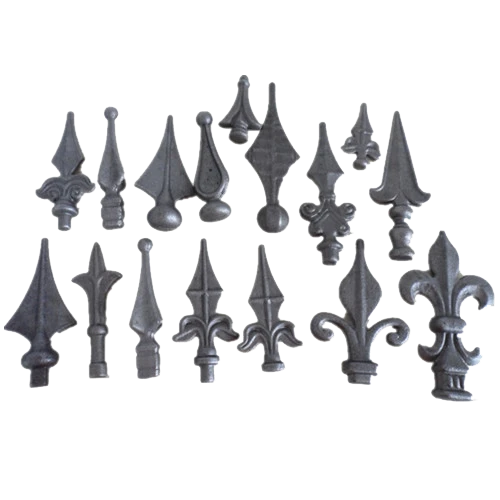Mobile:+86-311-808-126-83
Email:info@ydcastings.com
id fan impeller
Understanding the Role of ID Fan Impellers in Industrial Applications
In the realm of industrial ventilation and air movement, ID fans, or Induced Draft fans, play a crucial role in optimizing the efficiency of various processes. At the heart of these fans lies the impeller, a component that significantly influences their performance and functionality. This article delves into the importance of ID fan impellers, their design, operational principles, and applications across different industries.
The Function of ID Fans
ID fans are primarily used to remove flue gases from combustion processes, ensuring a complete and efficient exhaust of hot gases from equipment such as boilers and furnaces. Unlike forced draft fans, which push air into a system, ID fans pull air and gases out, creating a negative pressure environment. This functionality is vital for maintaining proper combustion conditions and enhancing the overall efficiency of thermal systems.
What is an Impeller?
The impeller is a rotating component of the fan that imparts energy to the air or gas stream. It consists of a set of blades that capture the kinetic energy of the motor and convert it into dynamic pressure, allowing the air to flow through the system effectively. The design of the impeller greatly affects the fan's performance characteristics, including airflow rate, pressure rise, and energy consumption.
Design Considerations for ID Fan Impellers
1. Blade Design The shape, number, and angle of the impeller blades are crucial for determining the fan’s efficiency. More blades often mean higher airflow rates, but they can also increase resistance and reduce overall efficiency. Designers must strike a balance between blade design and the intended application.
2. Material Selection Given the environments in which ID fans operate, materials must withstand high temperatures and corrosive substances found in flue gases. Common materials include carbon steel, stainless steel, and specialist alloys that offer durability and resistance to oxidation.
3. Impeller Size The diameter of the impeller influences the volume of air moved. Larger impellers can move more air but require more energy. Conversely, smaller impellers are more efficient for lower airflow requirements but may not maintain the necessary pressure levels for larger systems.
Operational Principles
id fan impeller

When the impeller rotates, it accelerates the fluid or gas through the blades, creating a pressure difference that facilitates airflow. The relationship between the speed of the impeller and the volume of air moved is governed by the principles of aerodynamics. As the impeller spins, the design enables it to draw in air and expel it efficiently, optimizing system performance.
Maintaining the right operational parameters is crucial. Factors such as rotational speed, powdering of the impeller, and environmental conditions can significantly influence efficiency. Regular maintenance, such as balancing the impeller and checking for wear, is essential in prolonging the life of the fan and maintaining optimal performance.
Applications of ID Fan Impellers
ID fan impellers are prevalent across various industries
- Power Generation In thermal power plants, ID fans are critical for removing flue gases created during the combustion of fossil fuels. Efficient impeller design helps minimize emissions and improve boiler efficiency.
- Cement Production In cement kilns, ID fans manage the airflow necessary for efficient combustion and material preparation, ensuring a consistent temperature and quality of output.
- Waste Management Municipal waste incinerators utilize ID fans to manage hazardous gases, ensuring compliance with environmental regulations.
- Metallurgical Processes In applications like smelting and refining metals, ID fans help maintain the necessary atmospheric conditions by regulating the airflow.
Conclusion
The impeller is an integral part of ID fans, profoundly influencing their effectiveness and efficiency in various industrial applications. By understanding the design principles, operational functions, and applications of ID fan impellers, industries can optimize their processes, reducing energy consumption and increasing productivity. As we advance toward more sustainable industrial practices, the role of efficient impellers will be even more critical in addressing environmental concerns and maximizing process efficiencies.
-
Understanding Metal Casting TechniquesNewsApr.02,2025
-
Understanding Exhaust Manifolds for Enhanced Engine PerformanceNewsApr.02,2025
-
The World of Metal FabricationNewsApr.02,2025
-
Key Components for Pump and Turbo EfficiencyNewsApr.02,2025
-
Essential Tools for Automotive Maintenance and RepairNewsApr.02,2025
-
Durable Valve Components for Effective Water ManagementNewsApr.02,2025











